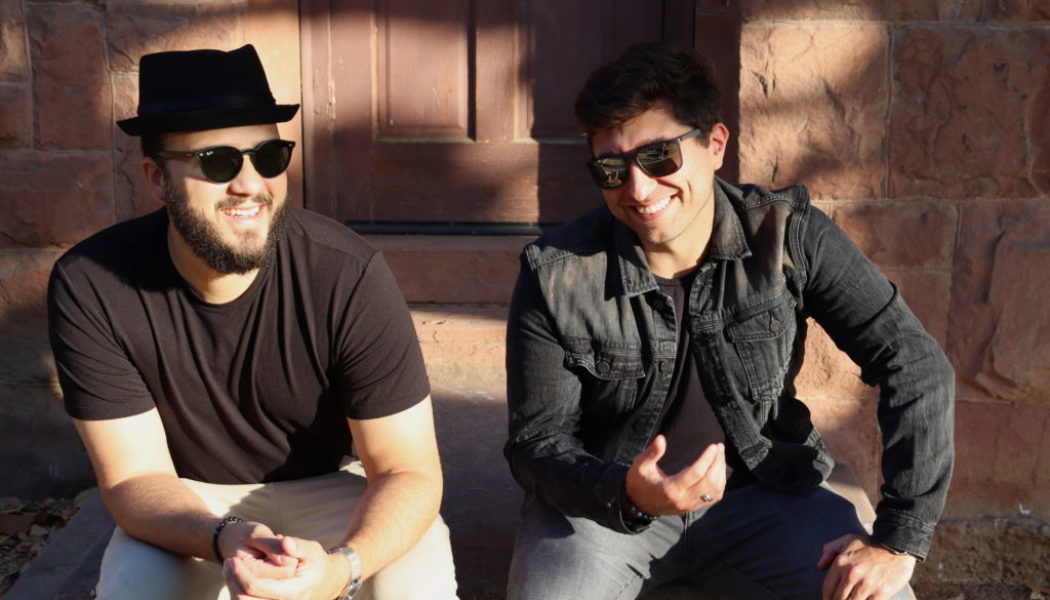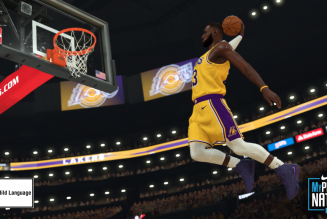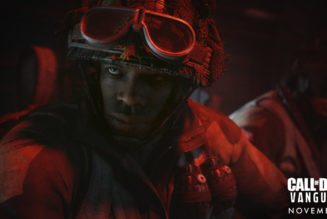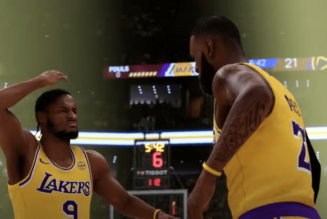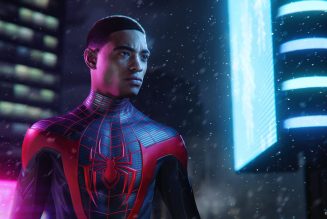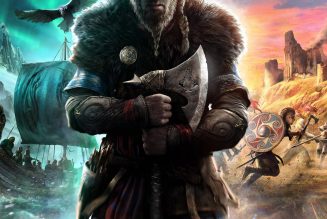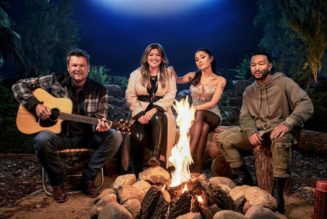
What happens when you take the basics of dodgeball, add in some of what makes Rocket League so addicting, and mix it with a retro-futuristic setting with visuals similar to Overwatch? You end up with Knockout City, the latest title from Velan Studios (developers of Mario Kart Live: Home Circuit) and the industry giants at EA.
Will it be the next casual fan favorite or major esports hit? Only time will tell, but the action-heavy combat dodgeball (or “dodgebrawl”) title certainly made a splash when it was released on May 21.
But perhaps the thing that makes Knockout City stand out the most is the extremely unique soundtrack. While many games are happy to either license music from existing artists or hire a composer (or composers, if there’s budget) to create their own score for a game, the Knockout City crew went a different direction by bringing in a duo known as The Soundlings.
From there, they tasked The Soundlings — veteran TV composers Matt Naylor and Sonny Rey (who were most recently heard on Lovecraft Country) — with not only creating original songs for “KO City Pirate Radio,” but developing a plethora of fictional bands and artists who “perform” the songs. Of course, this meant that in addition to writing little biographies for each act, they also had to be prepared to write, perform (or hire for), and produce a wide variety of genres that would all reasonably exist within the same world.
SPIN spoke with Naylor and Rey via Zoom to chat about the one-of-a-kind creative process they went through to bring musical life to Knockout City.
SPIN: Now you two aren’t new composers, but I can’t imagine you’ve done anything quite like this before. How did you creatively section off your brain to develop each one of these artists?
Matt Naylor: There were some things that stayed constant through every band, which is something that we talked about with the Velan Studios audio director. There were some elements that we wanted to stay the same throughout every single band — like the brass and the horns — that was going to be our heart and tie each and every band together. When it came to the individual sounds of every band, we would sit down with the audio director and have a conversation about things like making Johnny and the Breakers lean more surf rock to capture that ‘60s surf rock vibe while still doing a bunch of breakbeats for the futuristic side. We’d sit down and have a creative call to figure out what direction we’d go with the band, and then they would just let us go do our thing.
Sonny Rey: One constant throughout all the bands was the retro-futuristic vibe because that sets the tone for the whole game. The very first meeting we had with Velan, they said “OK this is set in a crazy 1950s futuristic world where they’re wearing leather jackets, but there’s neon stripes. They got crazy slicked-back hair, but their hair also glows like a neon hologram.
Seeing as you’ve worked on a ton of different TV shows and such before, but not many video games, was there a big difference in how you approached this one?
Naylor: I think the thing that we loved about this one was that they came to us with a really clear vision of the world. Working with the team at Velan was such a treat because they had a clear path to what they wanted. It was a great collaborative effort to be able to bring this vision to life, and it really used all of our past knowledge. Sonny and I have composed well over 1,000 tracks in so many different genres, so we were just taking this bank of information and going “Let’s put a little bit of this, and a little bit of this, and sprinkle a little bit of this on top.”
Rey: One of the major differences is that when you’re scoring a show, you get the sound and you run with that throughout the whole thing. For Knockout City, that was obviously different because we had all these different bands. The structure of the tracks changed too, because this is a game that somebody is probably going to sit there and play for hours on end, so we had to add so many layers to our tracks. That way they could pull stuff out and throw stuff in to make the same track feel like you could listen to it for 15 minutes and not even realize. That’s not something you’d hear on the soundtrack, but that aspect was really different.
Is there anything you didn’t expect when you started the project that surprised you?
Naylor: I think Sonny and I gained a whole new respect for big band composers. It takes a lot of time to write out all of the parts and be super meticulous with how we’re writing for players and stuff like that. It was a real learning curve for us. We knew going into this that we were going to have a band that had some futuristic retro Motown vibes on it, and then we knew that there was going to be this band that was more of a purist approach to big band. I think we put that off to the second-to-last or last band because it was a little bit intimidating.
Rey: I just remember you buying books on Amazon to go deep into music theory for that. I would come over to the studio and be like “Oh, you got another new book…” It was a lot of listening on both of our parts, and Matt was trying to nail that big band sound from the ‘60s in terms of the mixing and stuff.
Naylor: Chamber reverb. It was all chamber reverb.
Rey: Yeah. Luckily, we had my dad — who played all of the saxophones on Knockout City — for when we had questions. I remember at one point, he was just like “You need to write better parts.” But otherwise he was helpful.
Is there anything you’d really want people to take away from listening to any of the tracks?
Naylor: We just wanted to create something that was memorable and that people would want to sing along and walk away with it stuck in their head.
Rey: I was on Twitch, just kind of watching people play it, and the best moment was watching this guy in Germany start singing one of our melodies while he’s playing with his friends. That’s it right there. That’s why we did it. We don’t even speak the same language, but that language of music transcends everything. I had no idea what he was saying, but he started singing the melody and I was like “There we go! Subscribed.”
Naylor: There are also so many little ear candy moments in these tracks that only happen once. So I just want people to have fun with it. There’s a lot of crazy instrumentation too. Like in one of the bands, we did a lot of trumpets, but Sonny is actually featured on there playing what we call the “mumpet” — which is a mouth trumpet.
Rey: I was trading lines with a real trumpet, so there’s actually a part in there where me and the trumpet player are going back and forth — but I’m mumpeting and he’s trumpeting.
